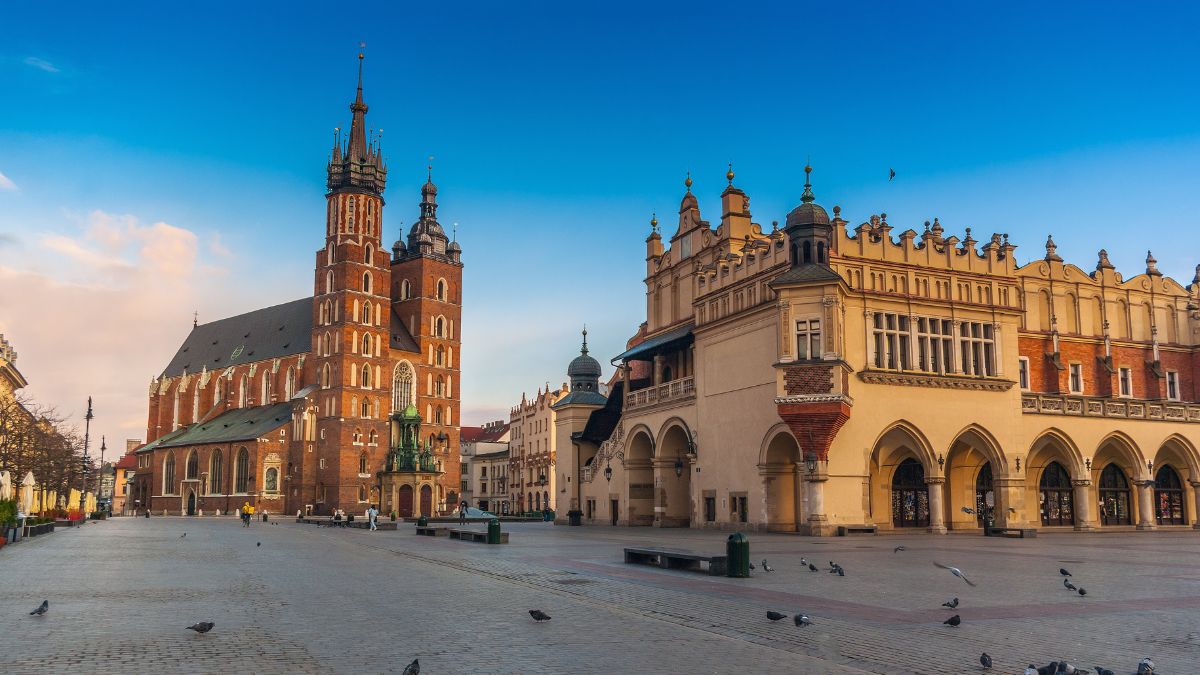
UNESCO listed sites in Poland. Which locations made it onto the prestigious list? Poland is known for its abundant and culturally significant landmarks and natural features along the Vistula River. A total of 17 properties from Poland have been recognized and listed on the UNESCO World Heritage List. These notable sites include important monuments, sacred and underground structures, and exceptional natural wonders.
Old Town in Krakow
The Historic Center of Krakow was designated as a UNESCO World Heritage Site in 1978. It was among the first 12 sites worldwide to receive this prestigious recognition. The inscription includes the Old Town located within the former city walls, Wawel Hill, and the Kazimierz district including Stradom, all acknowledged for their cultural significance.
CZYTAJ PO POLSKU: Najpiękniejsze miejsca w Polsce. Zabytki i cuda natury z listy UNESCO
Royal Salt Mines in Wieliczka and Bochnia
1978 was a significant year for Polish cultural heritage sites. That year, the Historic Salt Mine Wieliczka was also included among the top twelve UNESCO World Heritage Sites. In 2013, this listing was expanded to include the Salt Mine in Bochnia and Saltworks Castle in Wieliczka. These facilities, situated approximately 30 kilometers apart, attract numerous tourists each year who eagerly explore the underground passages.
READ: Top 10 Best Amusement Parks in Poland
Białowieża Forest
In 1979, an exceptional Polish natural area was added to the UNESCO World Heritage List. This area encompasses part of the Białowieża National Park, recognized for its unique biodiversity and largest population of European bison.
Old city in Warsaw
Warsaw Old Town was inscribed on the UNESCO list in 1980 in recognition of its remarkable reconstruction efforts following its destruction by the Germans in 1944. The meticulous attention to detail during the reconstruction led to the Old Town’s designation as a cultural and historical heritage site.
READ: The longest pier on the Baltic Sea is set to open this summer, spanning an impressive length of 720 meters
The Old Town in Zamość
In 1992, the urban complex in Zamość was added to the UNESCO list to preserve its Renaissance city plan, which uniquely combines Italian and Central European architectural traditions.
The medieval urban complex of Toruń
The distinctive area of Toruń was inscribed on the UNESCO list in 1997. This city is home to a Teutonic castle constructed in the 13th century, along with impressive public and private buildings dating back to the 14th and 15th centuries.
Teutonic Castle in Malbork
The 13th century fortified monastery of the Teutonic Order was added to the UNESCO list in 1997. As the largest preserved medieval castle in Europe, it rightfully earned a place of honor on the World Heritage List.
Kalwaria Zebrzydowska
In 1999, Kalwaria Zebrzydowska was added to the UNESCO list due to its symbolic significance related to the Passion of the Lord and the life of the Virgin Mary. This site has been a destination for pilgrims for many years, drawing visitors for its religious and spiritual associations.
Churches of Peace in Jawor and Świdnica
In 2001, the religious buildings in Jawor and Świdnica were inscribed on the UNESCO list. These sites are notable for their size, timber-framed structures and unique interior finishes adorned with polychromes.
Wooden Churches of Southern Małopolska
In 2003, six wooden churches were included in the UNESCO list: Binarowa, Blizne, Dębno, Haczów, Lipnica Murowana, and Sękowa. These churches are exceptional examples showcasing various aspects of construction techniques from the Middle Ages within Roman Catholic culture.
Muskau Park
In 2004, another natural site joined the UNESCO list of treasures. Muskau Park is a cross-border Polish-German facility spanning approximately 700 hectares. It is recognized as the largest historic landscape park in Europe.
Centennial Hall in Wrocław
In 2006, another notable landmark from Poland was added to the UNESCO list: the Centennial Hall in Wrocław. This architecturally unique structure features a reinforced concrete roof with the largest span in the world.
Wooden Orthodox Churches in the Polish and Ukrainian region of the Carpathian
In 2013, Orthodox and Greek Catholic churches located in the Carpathian Mountains were inscribed on the UNESCO list. This entry includes 16 churches, with eight of them situated in Poland and the remainder in Ukraine. These churches represent various ethnic groups including Galician, Boyko, Hutsul, and Lemko, showcasing the cultural and architectural differences among the ethnic communities in the Carpathian region.
Lead, silver and zinc ore mine in Tarnowskie Góry and groundwater management system
In 2017, the mine located in Upper Silesia was inscribed on the UNESCO list. Situated in one of the primary mining regions in Central Europe, this mine has a historical association with the extraction of silver, lead, and zinc ores, as well as the development of underground drainage systems.
Krzemionki region of prehistoric striped flint mining
In 2019, a site located in the Świętokrzyskie Mountains region was added to the UNESCO list. This property is associated with mining activities dating back to the Neolithic and Bronze Ages, particularly the extraction and processing of striped flint to create tools. This region is highly significant in the field of archaeology, representing a treasure trove of ancient mining and craftsmanship.
Ancient and primeval beech forests of the Carpathians
The beech forests within the Bieszczady National Park were inscribed on the UNESCO list in 2021. These forests serve as an exceptional example of intact forest complexes within the temperate zone. The diverse and rich ecosystem of this area has earned it a well-deserved place on the UNESCO World Heritage list.
Auschwitz – Birkenau – Nazi concentration and extermination camp
In 1979, the UNESCO list was enriched by the inclusion of the former Auschwitz-Birkenau concentration camps. This entry aims to symbolize and honor all sites of genocide of this nature worldwide.
All the properties in Poland distinguished by UNESCO are not only national treasures but also global treasures. These sites and places are diverse, offering something unique for every visitor to discover and appreciate.
